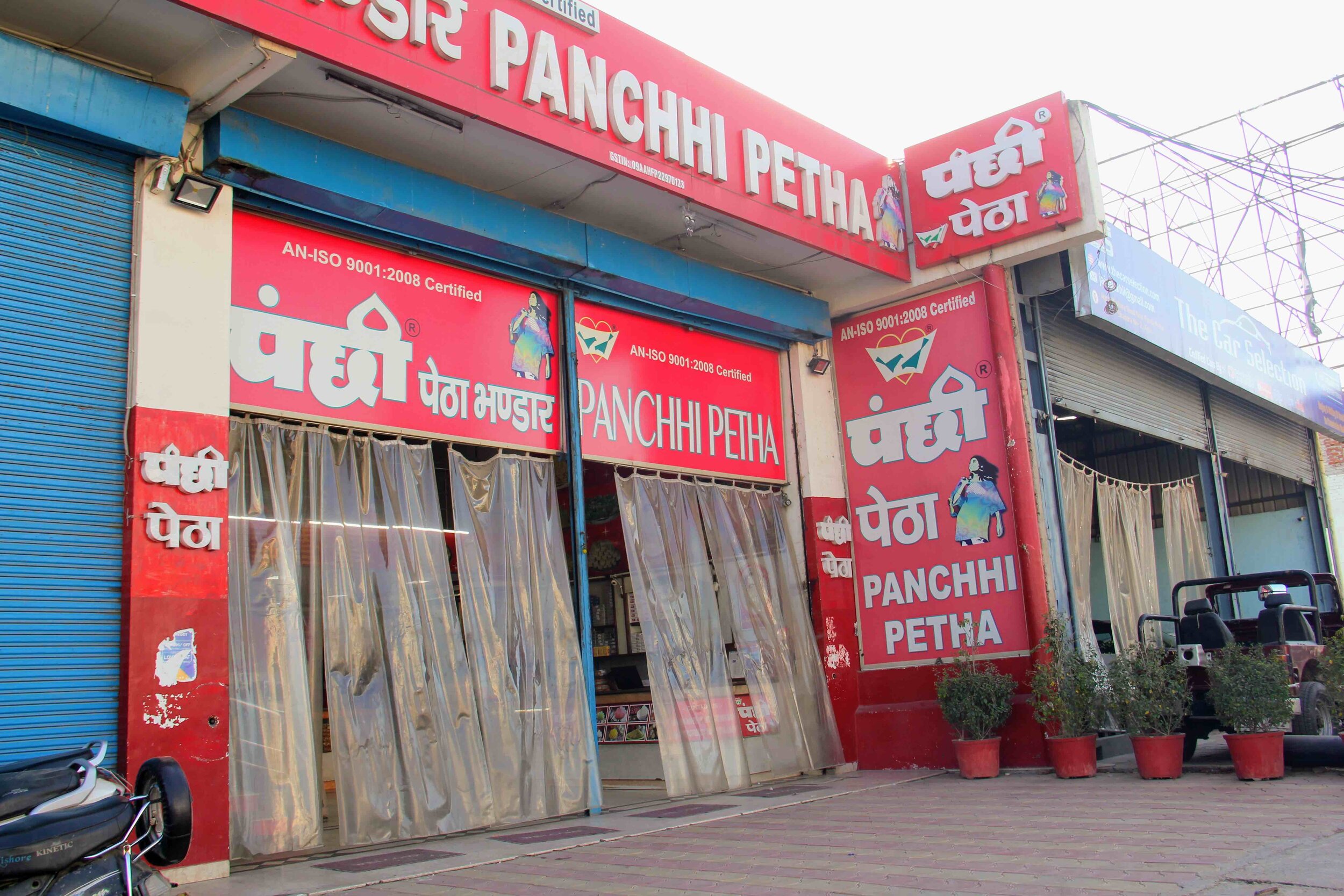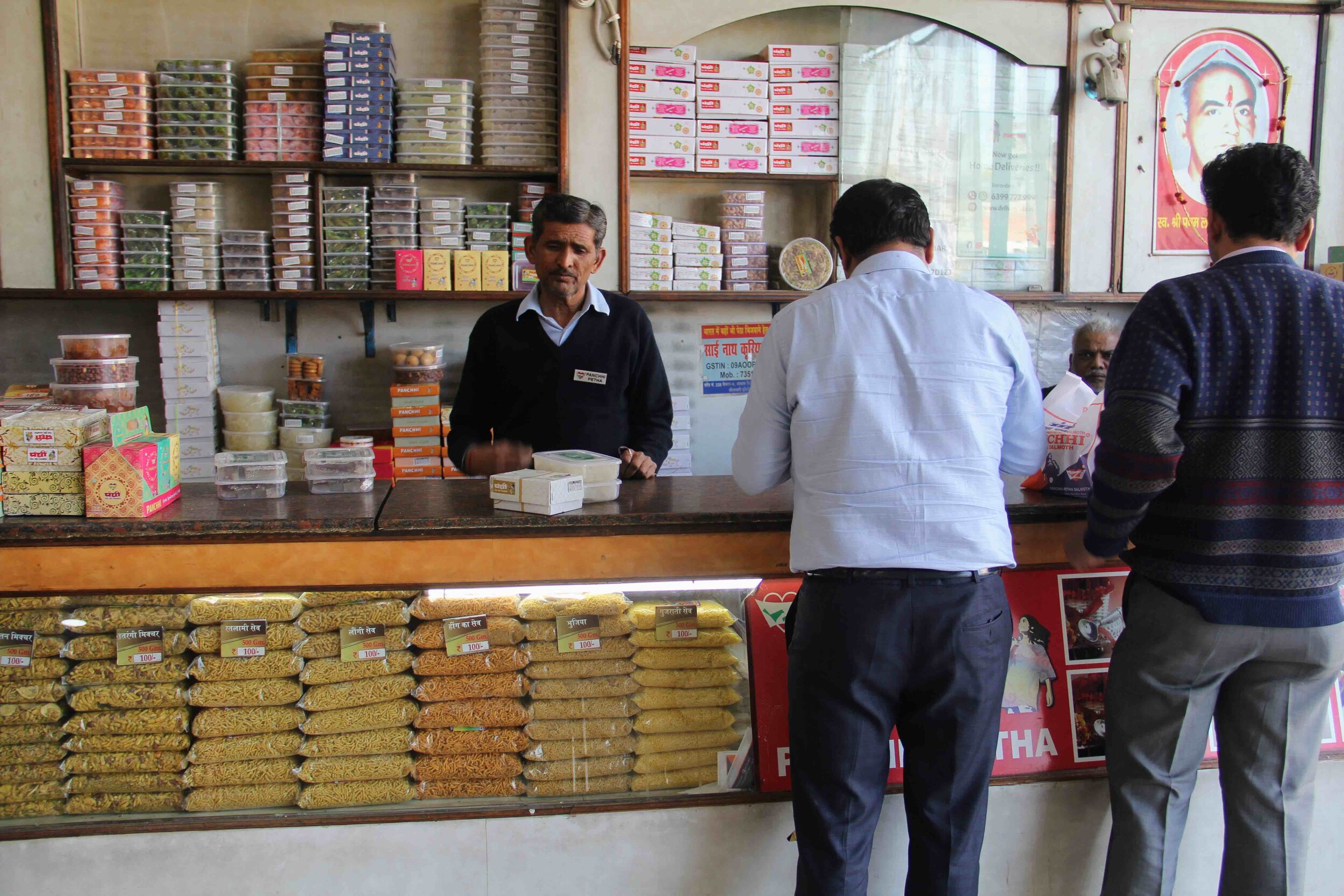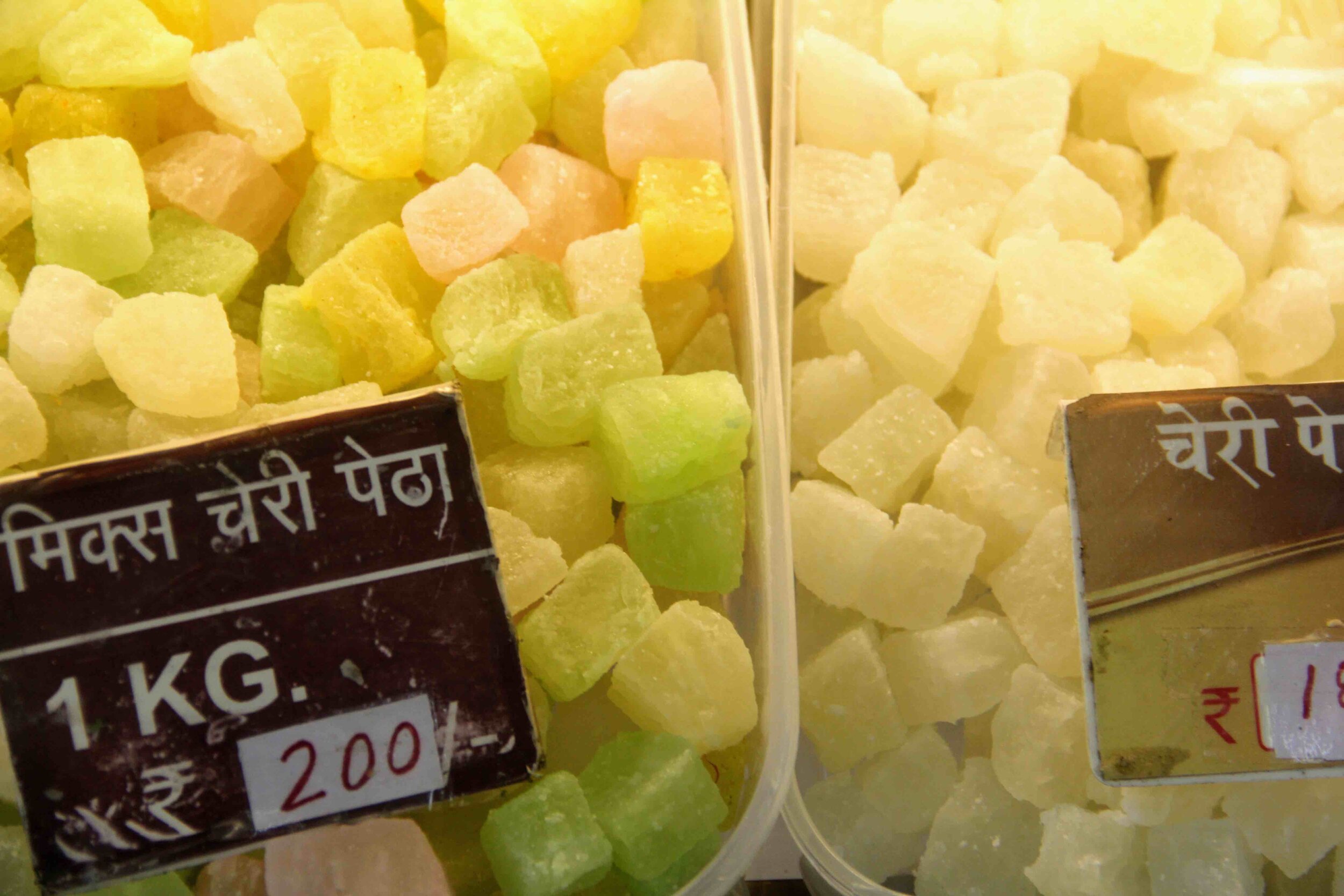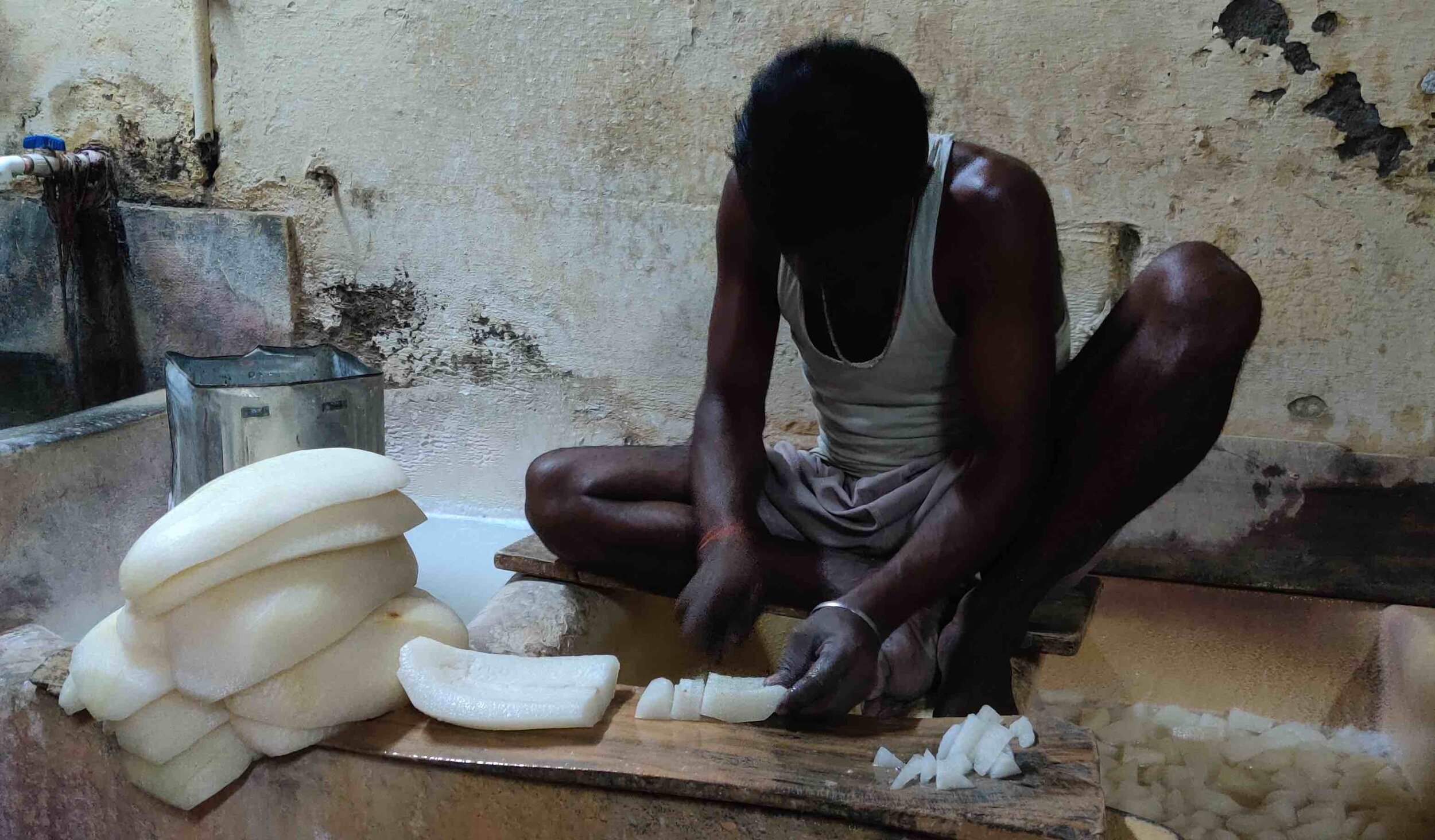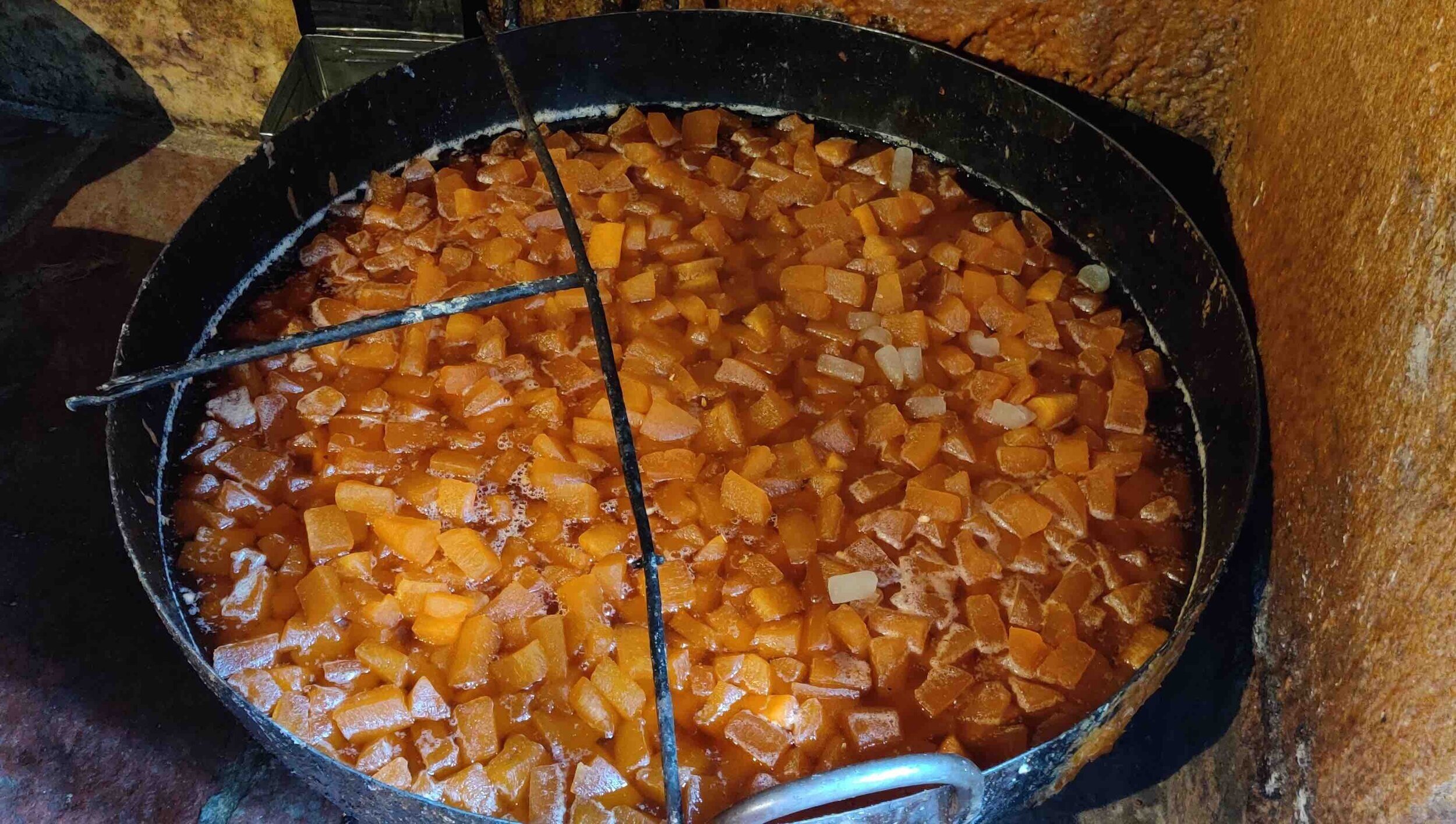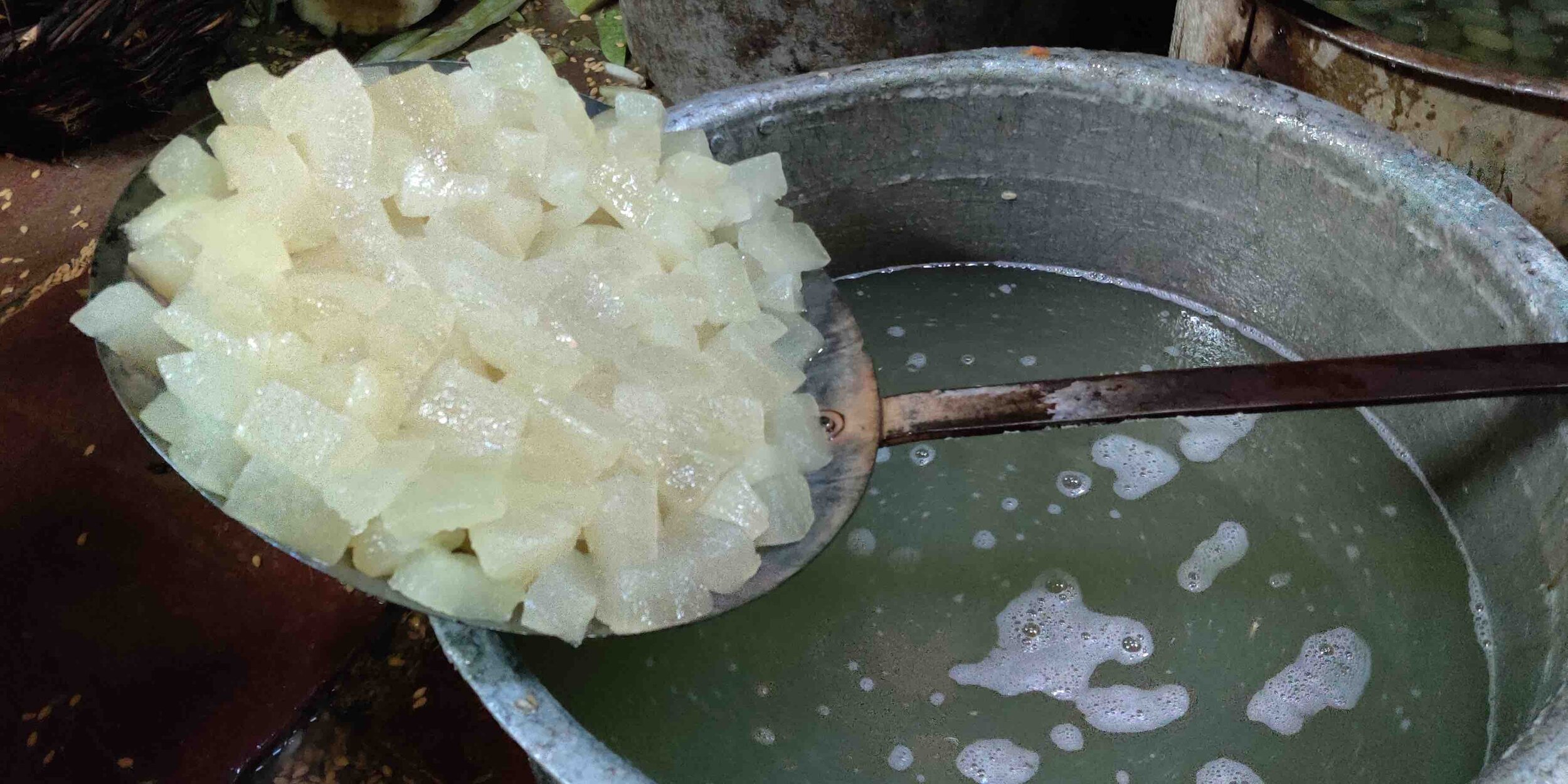Petha, A Confection as Old as the Taj Mahal

Petha, a confectionary made of just fruit and sugar, that is now synonymous with Agra.
Growing up in Agra in the late ‘60s, the gifts we carried back to our hometown in Chennai were invariably boxes of pale green petha, the signature candy from the ‘City of Love’. In fact, the first sight to greet visitors at the Agra station were stalls stacked with boxes of this fabled mithai. For decades, this translucent, melt-in-your mouth, cloyingly sweet petha has been synonymous with Agra. Made from the humble ash gourd or white pumpkin, this sweet is either sold dry, or together with the sugary syrup it is cooked in.
I returned to Agra many years later, as a journalist in search of the stories behind this beloved confection. My local guide took me to the most famous shop in the business — Panchhi Petha, whose name has been replicated across several dozen ‘imposter’ shops. The original, in Sadar Bazar, has rows of syrupy pethas of different varieties, stacked to towering height on their shelves. That original shop was founded by Seth Pancham Lal Goyal, (Panchhi for short), almost 100 years ago. Now it has branches in Agra, Delhi and Lucknow.
“Our pethas are known for their purity — made with only sugar, water and fruit, and no additives,” explains the present owner. “Petha-making has been in our family for generations.” They started with the dry petha, which has the longest shelf life. But now, offer as many as 50 variations. “People are more health conscious now, so we also offer a sugar-free variation,” he says. The petha in his store varies between Rs. 100-300 a kilo.
Pethas have a history that goes back nearly 400 years, to the rule of Mughal Emperor Shah Jehan. Its origin tale is apocryphal: “Shah Jehan had some of the most sophisticated culinary tastes, and some of the best royal chefs in his royal kitchens,” says food historian, Dr Sanjeev Kumar Saxena, who works at the Jaypee Palace Hotel in the city. The Taj Mahal took 22 long years to build, and the 21,000 workers on site had to be given frequent doses of energy — the petha was developed to give them a much-needed sugar rush, as well to keep the workers hydrated. Emperor Shah Jehan consulted with his master architect, Ustad Isa, who in turn turned to a Pir, or holy man, for help. The Pir is believed to have received the recipe for petha in meditation. Another version says that Shah Jehan asked for a sweetmeat as pure and as white as the Taj Mahal itself. And the petha was created in response to that call.
Panchhi Petha store in Sadar Bazaar sells the traditional petha as well as its variants like the green paan petha (that tastes just like a sweet paan), cherry petha, chocolate petha, coconut, almond, orange, pineapple and angoori petha. They also come in many inventive forms — there is the petha sandwich (with khoya, cashew and cardamom stuffed between layers of petha) and another called the gulab ladoo.
I travelled to the Old City of Agra with my guide, where many old petha shops are clustered around the Noori Gate, as cottage industries that have kept family tradition alive. Petha was traditionally made on coal fire, which was in part responsible for the air pollution around the Taj Mahal, and generated large quantities of organic waste. Many of these families were asked to relocate to a spot across the Yamuna river, as the Noori Darwaza area fell within the Taj Trapezium zone (an area of 10,000 sq. km around the Taj Mahal, marked to protect the monument from pollution).
One producer I met was unhappy with the move. “We have been making this sweet for decades in the same way; we cannot be blamed for damage to the Taj.” There is also increasing pressure to shift to LPG stoves instead of coal, but the families feel that this will affect the authenticity of flavour. “Also, costs will be significantly higher if we use LPG stoves,” he adds.
Walking through the crowded, narrow streets of the Old City, as monkeys cling on to electric cables above us, past old havelis with ornate jhaali work, and food stalls selling hot puris and potato subji, I arrive at one of the oldest petha making units, Munnalal Agarwal Pethe Wale in Rawat Para, to see how this confection is actually made. Inside a dark room with steam billowing from huge vats, workers de-seed the pumpkin and slice it up into bite-sized chunks.
It is then prodded with the tines of a fork, and cured in a solution of sludgy, white calcium hydroxide, or edible lime, for as long as ten hours. The pumpkin pieces are then drained and washed, and boiled in water till tender and translucent. Now, they are left to soak in chashni or sugar syrup, at which stage flavours like saffron or rose are incorporated. The candy that emerges 24 hours later, after a process of drying, has a delicate chewy texture, moist on the inside, with a crisp, crunchy exterior.
“Today, Agra’s petha industry has more than 1500 cottage units selling over 700- 800 tonnes of petha every day,” explains Dr Saxena. Many consider petha to be a ‘pure’ confection because it has no butter, oil or cream — it is simply fruit and sugar. It has a long shelf life, unlike most sweetmeats, and does not spoil quickly. White gourd is also medicinal; beneficial for a host of health conditions including gastritis, ulcers, cough and asthma. Petha made in Agra today has a GI (geographical indication) tag, to attest to its place of origin.
The Agra petha is traditionally complemented by the Agra dalmoth, a spicy, salty snack made with gram flour and dry fruits. I pick up a box of angoori petha and dalmoth to take back home, my head and heart filled with history and food. Angoori petha, its delicate body yielding as I take a bite, is a real, tangible connection to the royal kitchens of Mughal emperors, and the workers who built the magnificent edifice of the Taj Mahal that still stands before us, centuries later.
Kalpana Sunder is a freelance travel writer and photographer based in Chennai, India.
ALSO ON THE GOYA JOURNAL
